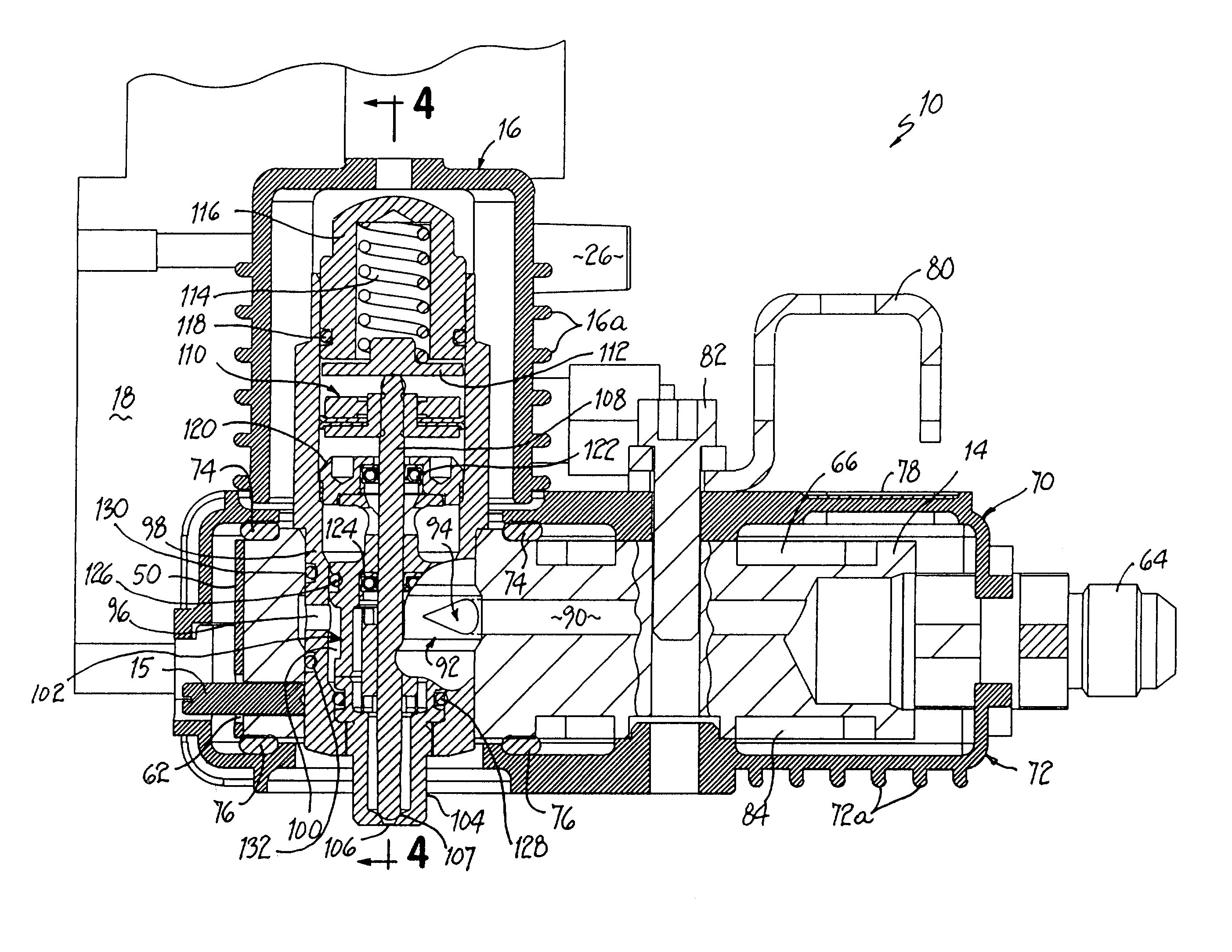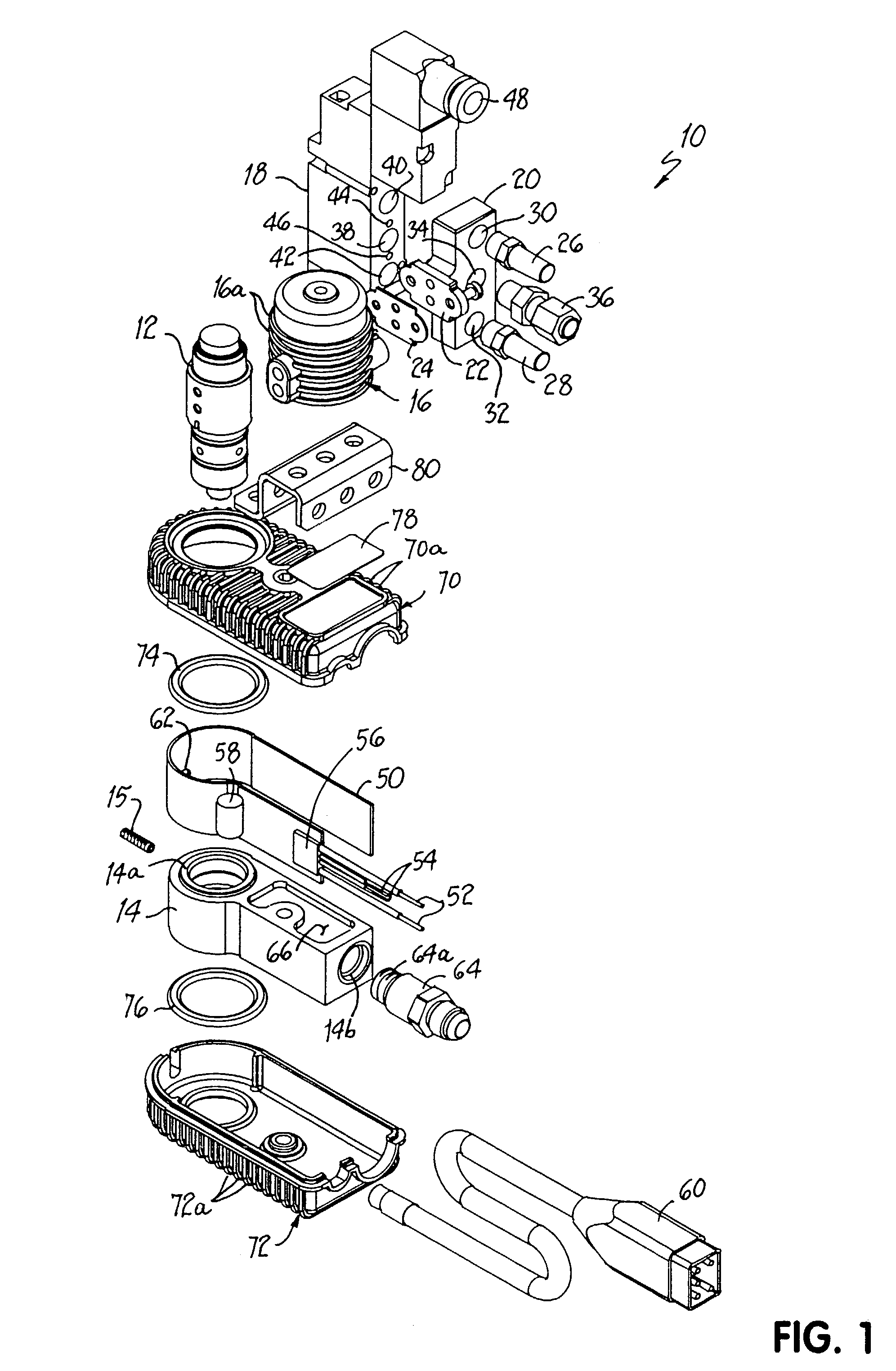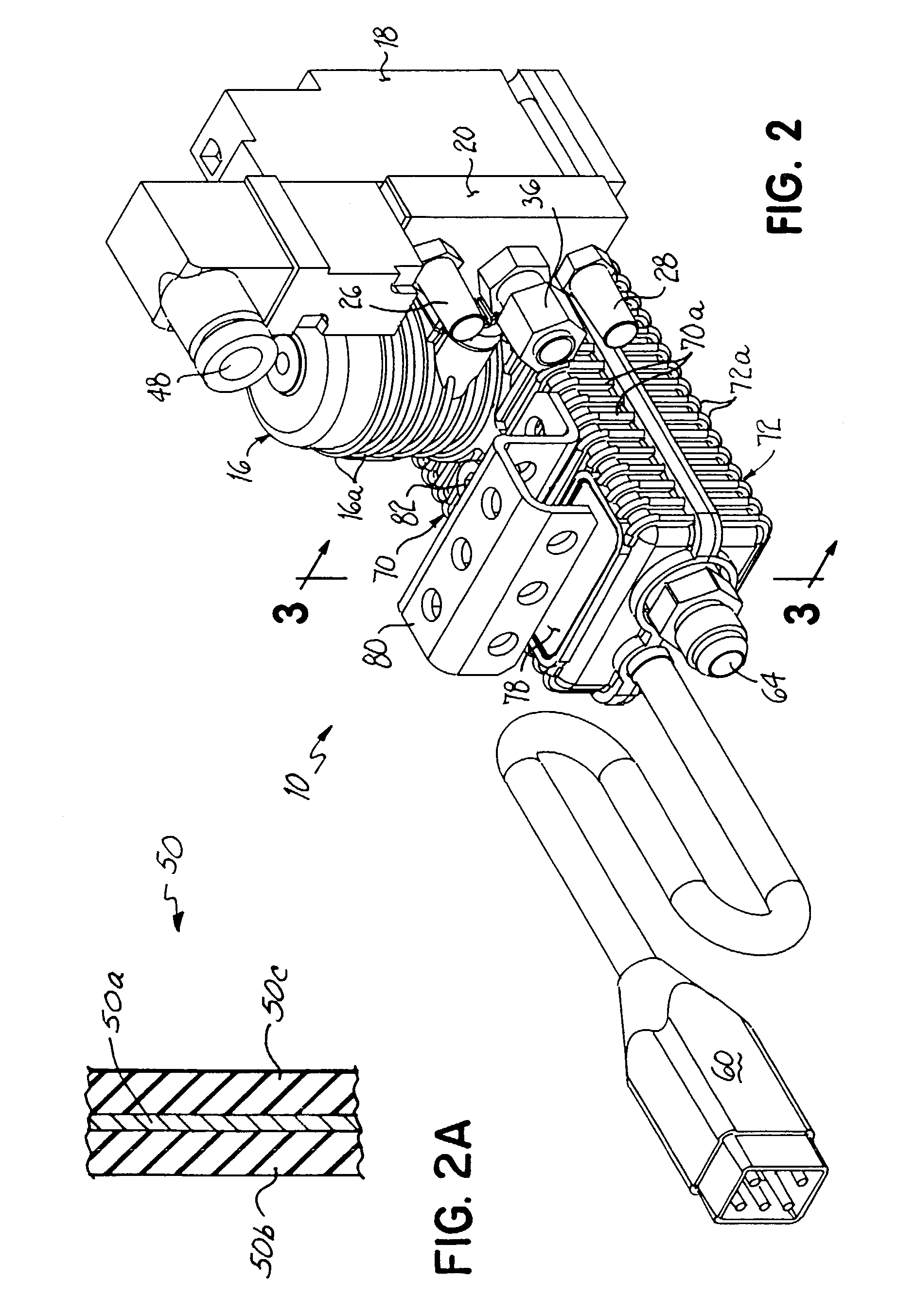Dispensing apparatus for viscous liquids
a dispenser and viscous liquid technology, applied in the direction of liquid transfer devices, transportation and packaging, pipe heating/cooling, etc., can solve the problems of heater failure, localized hot spots or overheating, and reduce the ease with which equipment may be serviced by such personnel, so as to reduce localized liquid flow velocities, accurately control the liquid temperature, and reduce undesirable cut-off effects
- Summary
- Abstract
- Description
- Claims
- Application Information
AI Technical Summary
Benefits of technology
Problems solved by technology
Method used
Image
Examples
Embodiment Construction
[0023]Referring to FIGS. 1 and 2, a hot melt adhesive dispensing apparatus 10 of the invention includes a dispensing module 12 and a liquid supply manifold 14. Dispensing module 12 is positioned within a mounting bore 14a of manifold 14 by a set screw 15. An air actuation cap 16 covers the upper end of dispensing module 12 and includes heat dissipating fins 16a. A solenoid valve 18 is connected to air actuation cap 16 by an adapter 20 having a flange 22. A seal 24 is disposed between air actuation cap 16 and adapter flange 22. As will be described in greater detail below, adapter 20 directs pressurized air into module 12 through air actuation cap 16 to actuate a valve within module 12 between open and closed positions.
[0024]Respective mufflers 26, 28 are connected within threaded exhaust ports 30, 32 of adapter 20. A central supply port 34 receives an air supply connector 36. Port 34 connects with supply port 38 of solenoid valve 18. Respective exhaust ports 30, 32 of adapter 20 con...
PUM
 Login to View More
Login to View More Abstract
Description
Claims
Application Information
 Login to View More
Login to View More - R&D
- Intellectual Property
- Life Sciences
- Materials
- Tech Scout
- Unparalleled Data Quality
- Higher Quality Content
- 60% Fewer Hallucinations
Browse by: Latest US Patents, China's latest patents, Technical Efficacy Thesaurus, Application Domain, Technology Topic, Popular Technical Reports.
© 2025 PatSnap. All rights reserved.Legal|Privacy policy|Modern Slavery Act Transparency Statement|Sitemap|About US| Contact US: help@patsnap.com



